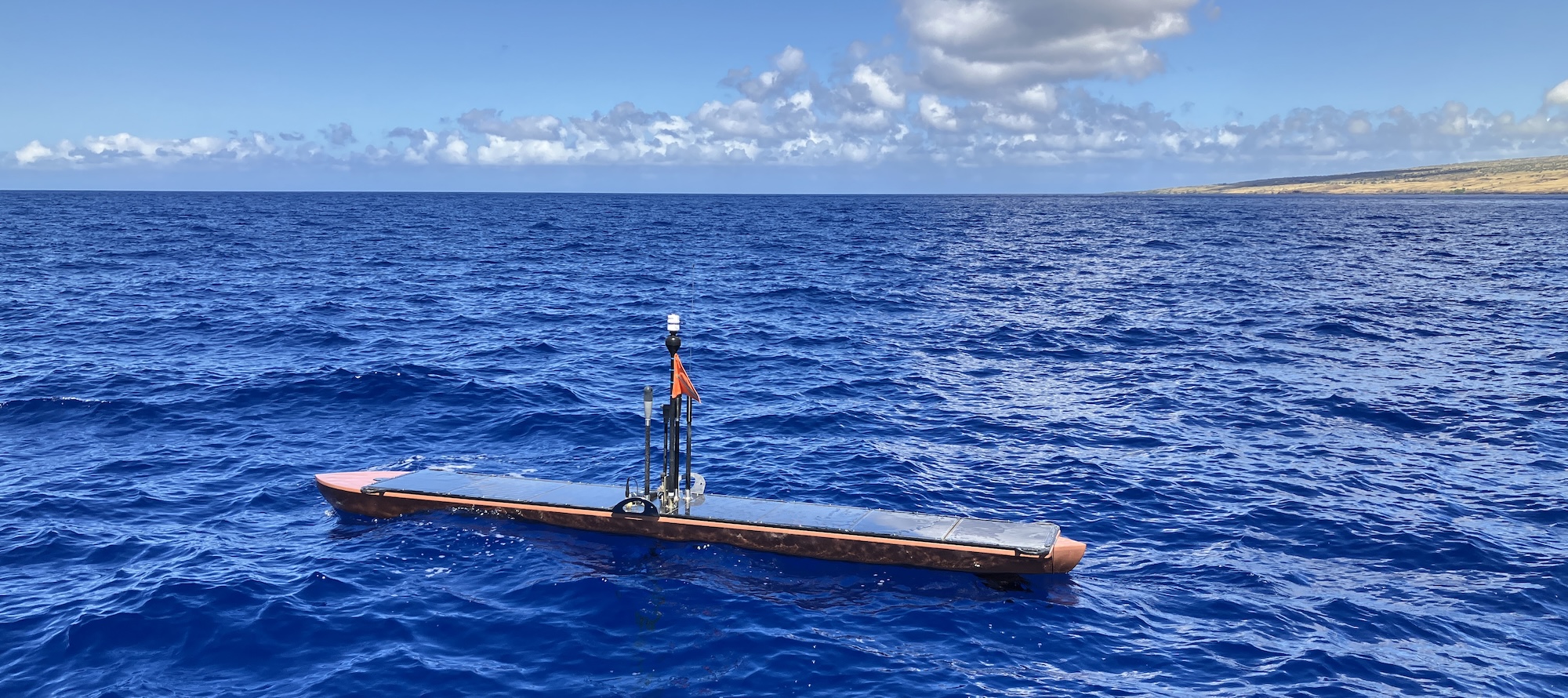New, Larger Wave Glider SV5 Uncrewed Surface Vehicle Now Available
Herndon, VA. , May 20, 2025
Increased Capacity for Payloads, Power
Liquid Robotics announces the launch of Wave Glider SV5, a larger Wave Glider Uncrewed Surface Vehicle (USV) variant that expands the range of uncrewed, long-duration maritime missions. At over five meters in length, Wave Glider SV5 supports multiple payloads and complex configurations while operating in various sea states and weather conditions, including high latitudes and low-solar environments. The new platform builds on the proven architecture and more than 15 years of operational experience of the industry-leading Wave Glider SV3 for persistent data collection above and below the surface along with real-time data delivery.

At over five meters in length, Wave Glider SV5 sustains power-intense payloads during long-duration deployments. Credit: Liquid Robotics.
“We heard loud and clear from our customers the need for a larger Wave Glider platform to support the ever-increasing complexity of autonomous maritime missions. Uncrewed systems are packed with sensors and required to operate for months in extreme ocean environments,” said Shane Goodenough, CEO of Liquid Robotics. “The SV5 combines support for power-hungry payloads and long endurance missions without the addition of traditional fossil fuel power generators.”
Wave Glider SV5’s payload capacity in the hull has more than tripled compared to the original SV3 platform. The extended length of the vehicle also provides significantly more space, doubling its solar power collection and storage, which is a key requirement to reliably sustain high-power payloads in austere and extreme environments.
Configurable Platform for Custom Integrations
“Each mission is so unique. We’ve designed the SV5 to be highly configurable and ready for whatever our customers need. With the expanded solar collection and energy storage, SV5 can host power-intense computing needed for edge processing and is ready for extended deployments in high latitudes during the winter months. We also addressed the need for increased communication capability, including high-bandwidth data offload and cross-domain connectivity. Looking ahead, the SV5 is ready for missions with autonomous teaming and can host other uncrewed systems,” said Amanda Kryway, Liquid Robotics’ Head of Engineering. “We also wanted to keep our existing SV3 customers in mind, so we designed the SV5 platform to be cross-compatible, enabling mixed usage of payloads, parts, and operational equipment,” she adds.

Wave Gliders consist of a surface float, umbilical, and sub to convert wave motion into propulsion. Credit: Liquid Robotics.
Enabling Persistent Ocean Surveillance
Wave Gliders harness wave energy for forward propulsion and collect solar energy to power onboard electronics. The energy self-sufficient platform consists of a surface float, powered umbilical, and a sub. Wave Gliders support maritime defense and security operations through tailored mission capabilities for Maritime Domain Awareness (MDA), Anti-Submarine Warfare (ASW), and Intelligence, Surveillance, and Reconnaissance (ISR). Wave Gliders also collect and deliver oceanographic and atmospheric data for real-time observations and long-term time-series to inform Earth science, offshore energy, and other maritime operations.
Liquid Robotics is now accepting orders with initial customer deliveries already scheduled for fall 2025. Please inquire with us for more details at support@liquid-robotics.com.
About Liquid Robotics
Liquid Robotics, a Boeing company, designs and manufactures the Wave Glider®, the most experienced and proven Uncrewed Surface Vehicle (USV). Powered exclusively by wave and solar energy, the Wave Glider stays on mission 24×7 for several months at a time, providing real-time data and communications for a variety of applications. For more than 15 years, Liquid Robotics has supported science, commercial, and defense customers with tailored solutions to ensure successful long-endurance and persistent ocean monitoring missions in varying sea states. Visit www.liquid-robotics.com to learn more. Liquid Robotics and Wave Glider are registered trademarks of Liquid Robotics, Inc., a wholly owned subsidiary of The Boeing Company.